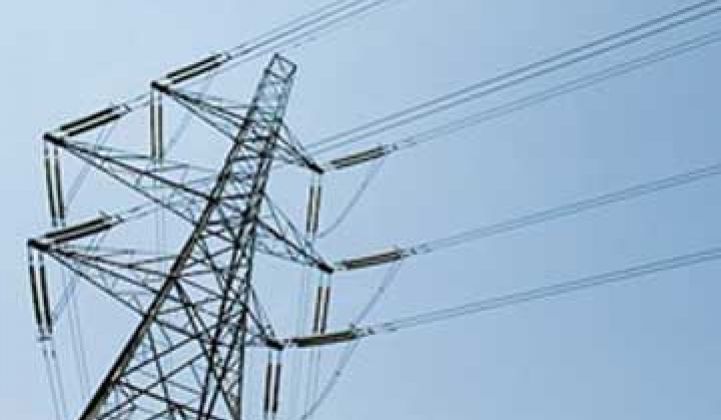How do we know when we’ve passed from smart grid 1.0 into smart grid 2.0?
Greentech Media just wrapped up a webinar on the topic, and we’ll be sharing the slides, audio and Q&A from the Wednesday session in short order (UPDATE: here's the link). In the meantime, here’s a cogent definition of terms from Chris King, chief regulatory officer at eMeter:
“Smart grid 1.0 was the baby step of getting the meters installed and getting them integrated,” King told webinar participants. “Smart grid 2.0 is actually doing other things with the meter data, like dynamic pricing, prepayment, line loss analysis, and all these other things that people have talked about.”
In other words, according to King’s definition, the move to smart grid 2.0 is already underway. Or is it? That’s a critical question facing utilities that are already deep into their first-generation smart meter deployments, and are now struggling to enable them to live up to their promises.
Simply put, smart meters were never meant to just serve as two-way communicating digital cash registers. From the get-go, utilities have been promising extra bonus features, such as outage detection, remote connect-disconnect, power quality sensing, and of course, home area network connectivity and demand response, as prizes at the end of the smart meter rainbow.
But many utilities are under pressure from state regulators to prove that customers are getting some kind of return for the increased rates that are paying for smart meters in the first place. That means turning on more features that help improve bill accuracy, grid reliability and customer relationships -- without going back to ask for more rate increases, that is.
As a major player in meter data management, eMeter has a good perspective on these transitional struggles. The San Mateo, Calif.-based startup manages smart meter deployments for North American customers including Alliant Energy, Texas utilities CenterPoint Energy and Bluebonnet Electric Cooperative, and Canada's Toronto Hydro, as well as European customers like Vattenfall in Finland and Sweden.
EMeter’s December acquisition by smart grid giant Siemens ensures that eMeter’s meter management systems, data analytics, customer engagement portals and other, yet-to-be-announced products will be finding expanded uses across a range of grid applications.
But of course, “The number one priority is to find out whether the meter data is accurate and valid,” Larsh Johnson, eMeter founder and CTO, said during Wednesday’s webinar. The industry has seen some early smart meter deployments suffer from customer complaints about overbilling or being charged during power outages, as well as a lack of customer support in resolving these kinds of issues.
That’s put pressure on meter data management software vendors like Itron, Oracle, Ecologic Analytics (now owned by Toshiba’s Landis+Gyr) and others to prove that their validation, estimation and editing (VEE) systems are up to the task.
But proving the accuracy of smart meters’ hourly to 15-minute interval reads (and managing dropped or corrupted data without skewing the results), is just the beginning, Johnson said. Integrating that kind of real-time data into utility back-end systems built to collect monthly meter reads and spit out bills is another massive IT project, he said.
EMeter got into the big data game early with its January 2011 partnership with Verizon to manage meter data from the cloud. But it isn’t the only MDM vendor tackling these challenges. Itron has a big project with IBM, SAP and Teradata to manage smart meter data for Southern California Edison, and Oracle is touting its ability to process more than a billion records to generate half a million customer bills in a matter of hours.
Once these challenges are in hand, utilities can begin to tap the wealth of information contained within smart meter data to start devising time-of-use rates that reward customers for curtailing energy use during peak hours, King noted. EMeter has tested out such rates with customers of utility Pepco in Washington, D.C., and supports utility Toronto Hydro in the world’s biggest time-of-use pricing program for Canada’s Ontario province. But many other states, including California, are pushing their utilities to start offering time-of-use pricing to all smart meter-enabled customers soon, he noted.
Another twist on variable prices is the prepay option, King added. While prepaid power is mainly used in developing countries, some North American and European utilities are experimenting with it as well, he said. Beyond getting their cash up front, utilities can see some efficiency gains from prepay, he noted. Arizona utility Salt River Project has signed up about 100,000 customers for prepayment options, and those customers have consequently reduced their energy use by about 12.8 percent (PDF).
And then there’s smart meter data analytics. That term can include everything from crunching smart meter data to pinpoint where distribution transformers and feeder lines are under stress, to devising customer rate plans based on real-world feedback, Johnson noted. EMeter’s recent upgrade of its EnergyIP platform includes a broad analytics suite including outage detection, power load monitoring and meter health, along with potential prepay options, network loss management and customer service interfaces. No doubt the rest of the smart meter-MDM crowd are busy developing and deploying the same kinds of features across their systems.



